5 Eating Habits to Lower Blood Sugar in Your 50s, Say Dietitians

Your blood constantly has sugar in it. This might sound bad when you first hear it, but it’s actually necessary for your health and your body’s energy. This blood sugar comes from the foods and drinks you consume, which means that your diet can directly impact how high or low these levels are.
And while you need a certain amount of blood sugar at all times, having levels that are too high over long periods of time can lead to serious health complications. Managing your blood sugar takes more than just focusing on the food you eat, but it’s an important component. To learn more about healthy eating habits to help lower your blood sugar, we talked with a couple of expert dietitians. Then, for more healthy eating tips check out The #1 Cereal to Lower Blood Sugar.
Combine carbohydrates and protein.
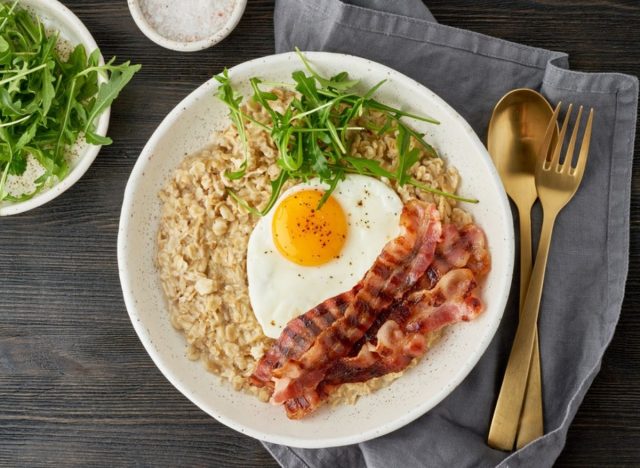
Protein is a key player in maintaining your health, especially if you’re trying to watch your blood sugar levels and prevent spikes.
“Protein helps to slow down digestion, meaning it gets you full faster and keeps you full longer. It also slows down how fast sugar or glucose enters your bloodstream,” says Amy Goodson, MS, RD, CSSD, LD author of The Sports Nutrition Playbook and member of our expert medical board. “So, when carbohydrates are paired with protein at a meal, blood sugar rises much more slowly and steadily. Combining foods like eggs and whole grain toast, oatmeal and yogurt, chicken and rice, beef and sweet potato, crackers, and cheese, etcetra, will keep that blood sugar lower and more stable throughout the day.”
Skip the regular soda.
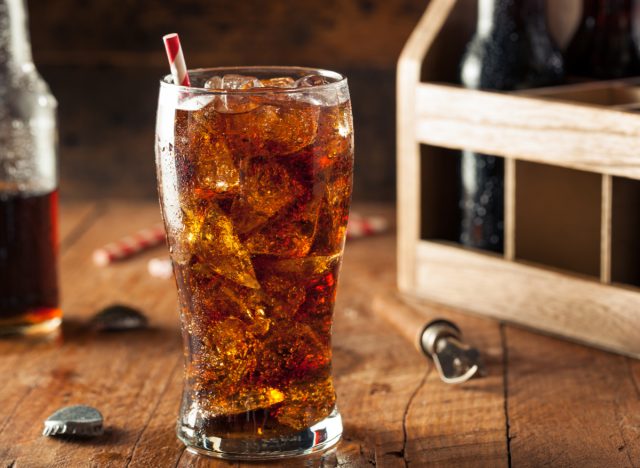
Regular soda is unfortunately one of the more harmful drinks out there, especially for those with diabetes or who may be at higher risk of developing diabetes.
“Drinking soda will load your body up with sugars without any protein, fiber, or healthy fats that can help support healthy blood sugars,” says medical expert Lauren Manaker, MS, RDN, author of The First Time Mom’s Pregnancy Cookbook and Fueling Male Fertility. “Stick to water or a sugar-free seltzer instead. Or if you really need a soda, try one that contains prebiotic fiber like OLIPOP.”
Focus on high-fiber foods.
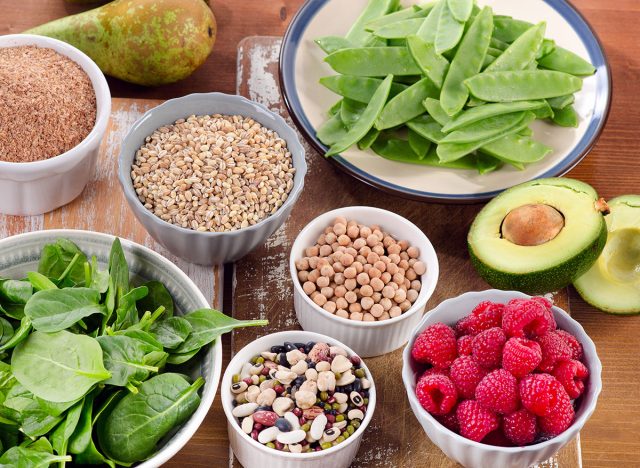
Like protein, fiber is a necessary component of a healthy diet for managing blood sugar levels.
“Carbohydrates digest the fastest of all the macronutrients, but fiber, a nutrient found in whole grains, fruits, vegetables, beans, legumes, nuts, and seeds, does not digest and thus slows down the digestive process,” says Goodson. “Fiber helps keep blood sugar from spiking after eating a carbohydrate food. Choosing carbohydrate foods with 100% whole grains like brown rice, oats, quinoa, 100% whole wheat bread, etc., as well as potatoes and sweet potatoes with skin, and fruit with edible skin can help manage blood sugar as we age.”
Include nuts with your meals.
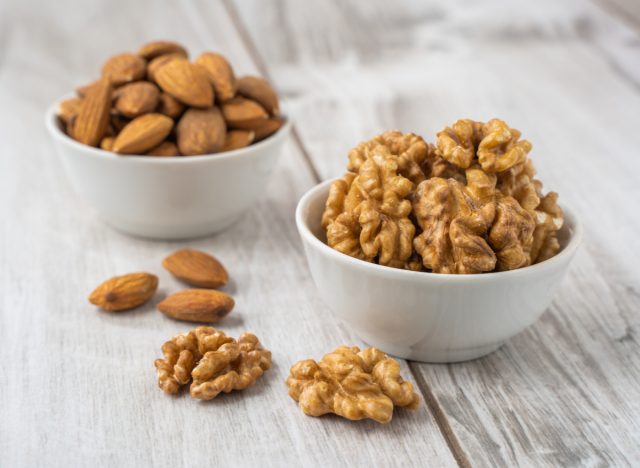
Nuts are an incredibly healthy snack to include in your day, and according to Manaker, they are great for helping to manage blood sugar as well.
“Nuts contain a balance of plant-based proteins, fiber, and healthy fats, which are three nutrients that can help manage blood sugars,” says Manaker. “Add a handful to your cereal, salad, or your yogurt parfait.”
Don’t eat carbohydrates by themselves.
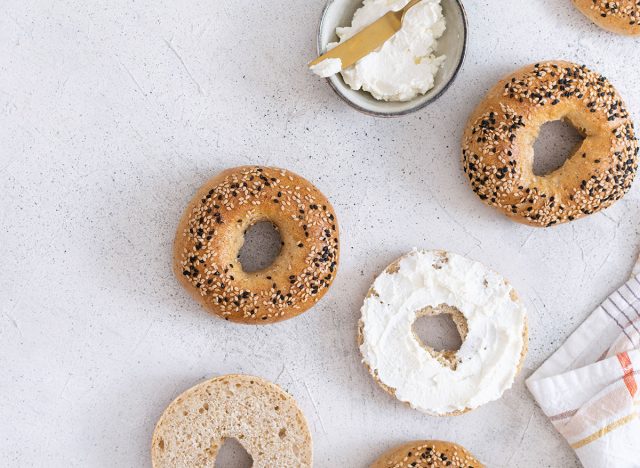
And lastly, Goodson warns that you may want to avoid eating carbohydrates on their own without any added nutrients.
“Because carbohydrates digest the fastest of all the macronutrients, they have the ability to cause a spike in blood sugar when eaten by themselves,” she says. “Eating a bagel, a fruit, or even pasta alone can cause blood sugar to increase more quickly. Be sure to add protein to meals and snacks to help prevent a blood sugar spike.”